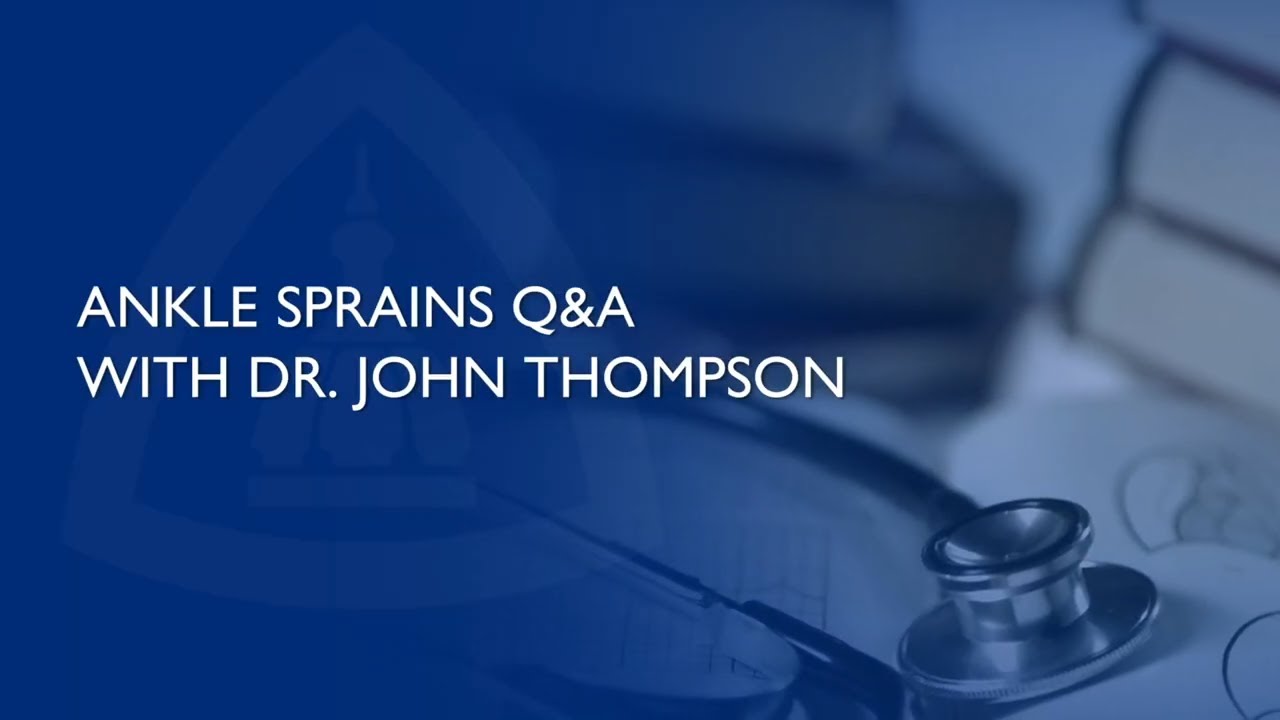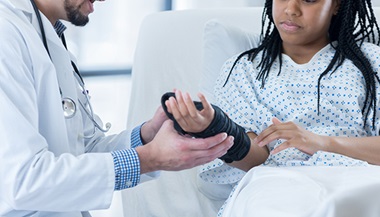Foot Pain and Problems
Anatomy of the foot
The foot is one of the most complex parts of the body. It is made up of 26 bones connected by many joints, muscles, tendons, and ligaments. The foot is susceptible to many stresses. Foot problems can cause pain, inflammation, or injury. These problems can result in limited movement and mobility.
What are the different types of foot problems?
Foot pain is often caused by improper foot function. Poorly fitting shoes can worsen and, in some cases, cause foot problems. Shoes that fit properly and give good support can prevent irritation to the foot joints and skin. There are many types of foot problems that affect the heels, toes, nerves, tendons, ligaments, and joints of the foot.
The symptoms of foot problems may look like other medical conditions and problems. Always see your healthcare provider for a diagnosis.
What are heel spurs?
A heel spur is a bone growth on the heel bone. It is usually located on the underside of the heel bone where it attaches to the plantar fascia, a long band of connective tissue running from the heel to the ball of the foot. This connective tissue holds the arch together and acts as a shock absorber during activity. If the plantar fascia is overstretched from running, wearing poor-fitting shoes, or being overweight, pain can result from the stress and inflammation of the tissue pulling on the bone. Over time, the body builds extra bone in response to this stress resulting in heel spurs. Treatment options may include:
-
Rest
-
Cold packs
-
Anti-inflammatory medication, such as ibuprofen
-
Proper stretching before activity
-
Proper footwear or shoe inserts
-
Corticosteroid injections
-
Surgery (for more severe, prolonged conditions)
What is a corn?
Corns are yellowish, callus growths that develop on top of the toes. Corns develop because of abuse or stress. Often, a corn develops where a toe rubs against a shoe or another toe. Corns can cause extreme discomfort and pain. Treatment may include:
-
Trimming the corn by shaving the layers of dead skin
-
Applying pads around the corn area
-
Wearing larger shoes to comfortably fit your foot without rubbing
-
Surgery
To avoid corn development, always buy shoes that fit properly.
What is a bunion?
A bunion is a protrusion of bone or tissue around a joint. Bunions may occur at the base of the great toe or at the base of the little toe, and often occur when the joint is stressed over a period of time. Women get bunions more often than men do because they may wear tight, pointed, and confining shoes. Bunions can also be a result of arthritis, which often affects the big toe joint.
Treatment of bunions may vary depending on the pain and deformity. Treatment may include:
-
Wearing comfortable, well-fitting shoes (particularly shoes that conform to the shape of the foot and do not cause pressure areas)
-
Surgery (for pain, not for cosmetic purposes)
-
Applying pads to the affected area
-
Medications, such as ibuprofen
A bunion, also known as hallux valgus, develops on the big toe joint when the bones of the big toe become misaligned. It looks like a large bump on the side of the toe. The big toe angles in toward the second toe, and, in severe cases, may overlap or tuck beneath the second toe. Bunions are more common in women than in men.
What is Morton neuroma?
Morton neuroma is a buildup of benign (noncancerous) tissue in the nerves running between the long bones of the foot. Morton neuroma occurs when two bones rub together and squeeze the nerve between them. Most often, neuromas develop between the bones leading to the third and fourth toes. Morton neuroma often causes swelling, tenderness, and pain. If the pain becomes severe, it may cause tingling, numbness, and burning in the toes. It usually occurs after standing or walking for a long period of time. Treatment for this condition may involve rest or a change in footwear that does not restrict the foot. If the problem persists, cortisone injections or surgery may be considered.
This condition is a thickening of the nerve sheath that surrounds a nerve in the ball of the foot. It most commonly develops between the third and fourth toes. It also commonly occurs between the second and third toes.
What are hammertoes?
A hammertoe is a condition in which the toe buckles, causing the middle joint of the affected toe to poke out. Tight-fitting shoes that put pressure on the hammertoe often aggravate this condition. Often a corn develops at this site. Treatment for hammertoes may include:
-
Applying a toe pad specially positioned over the bony protrusion
-
Changing your footwear to accommodate the deformed toe
-
Surgical removal
This condition is a deformity in which a toe bends downward at the middle joint. The second toe is the one most likely to be affected, but this deformity can occur in other toes as well. Sometimes, more than one toe is affected.
What is an ankle sprain?
An ankle sprain is an injury to the foot's ligaments in the ankle. Ligaments are tough bands of elastic tissue that connect bones to each other. Ankle sprains may occur if the ankle rolls, turns, or twists beyond its normal range of motion. Ankle sprains may be caused by awkward foot placement, irregular surfaces, weak muscles, loose ligaments, or wearing shoes with spiked heels. The symptoms of a sprain will depend on how severely the ligaments are stretched or torn, but usually include swelling, pain, or bruising. Treatment will depend on the severity of the sprain, but may include:
-
Resting the ankle
-
Wrapping the ankle with elastic bandage or tape
-
Ice pack application (to reduce inflammation)
-
Elevating the ankle
-
Nonsteroidal anti-inflammatory drugs, such as ibuprofen to help reduce the pain and inflammation
-
Gradual return to walking and exercise
-
A walking cast (for moderate sprains)
-
Surgery (for severe sprains)
-
Physical therapy
Ligaments are fibrous, elastic bands of tissue that connect and stabilize the bones. An ankle sprain is a common, painful injury that occurs when one or more of the ankle ligaments is stretched beyond the normal range of motion. Sprains can occur as a result of sudden twisting, turning or rolling movements.
Ankle Sprains | Q&A with John Thompson, M.D.
What is a foot fracture?
With 26 bones in a single foot, almost any of them can be broken. Many fractures do not require surgery, or even a cast, as they will heal on their own with some support. When a foot is fractured, the site of the fracture usually is painful and swollen. The site of the fracture will determine the course of treatment, if needed, including:
-
Ankle joint fractures. These fractures may be serious and require immediate medical attention. Ankle fractures usually require a cast, and some may require surgery if the bones are too separated or misaligned.
-
Metatarsal bone fractures. Fractures of the metatarsal bones, located in the middle of the foot, often do not require a cast. A stiff-soled shoe may be all that is needed for support as the foot heals. Sometimes, surgery is needed to correct misaligned bones or fractured segments.
-
Sesamoid bone fractures. The sesamoid bones are 2 small, round bones at the end of the metatarsal bone of the big toe. Usually, padded soles can help relieve pain. However, sometimes, the sesamoid bone may have to be surgically removed.
-
Toe fractures. Fractures of the toes normally can heal with or without a cast.
What is foot pain?
Foot pain can be debilitating to an active lifestyle. Foot pain can have many sources, from fractures and sprains to nerve damage. Listed below are 3 common areas of pain in the foot and their causes:
-
Pain in the ball of the foot. Pain in the ball of the foot, located on the bottom of the foot behind the toes, may be caused by nerve or joint damage in that area. In addition, a benign (noncancerous) growth, such as Morton's neuroma, may cause the pain. Corticosteroid injections and wearing supportive shoe inserts may help relieve the pain. Sometimes, surgery is needed.
-
Plantar fasciitis. Plantar fasciitis is characterized by severe pain in the heel of the foot, especially when standing up after resting. The condition is due to an overuse injury of the sole surface (plantar) of the foot and results in inflammation of the fascia, a tough, fibrous band of tissue that connects the heel bone to the base of the toes.
Plantar fasciitis is more common in women, people who are overweight, people with occupations that require a lot of walking or standing on hard surfaces, people with flat feet, and people with high arches. Walking or running, especially with tight calf muscles, may also cause the condition.
Treatment may include:
-
Rest
-
Ice pack applications
-
Nonsteroidal anti-inflammatory medications
-
Stretching exercises of the Achilles tendons and plantar fascia
-
Plantar fasciitis is an irritation of the plantar fascia. This thick band of connective tissue travels across the bottom of the foot between the toes and the heel. It supports the foot's natural arch. It stretches and becomes taut whenever the foot bears weight.
- Achilles tendon injury. The Achilles tendon is the largest tendon in the human body. It connects the calf muscle to the heel bone. However, this tendon is also the most common site of rupture or tendonitis, an inflammation of the tendon due to overuse.
Achilles tendonitis is caused by overuse of the tendon and calf muscles. Symptoms may include mild pain after exercise that worsens gradually, stiffness that disappears after the tendon warms up, and swelling. Treatment may include- Rest
- Nonsteroidal anti-inflammatory medications
- Supportive devices and/or bandages for the muscle and tendon
- Stretching
- Massage
- UltrasoundStrengthening exercises
- Surgery
Diabetes and vascular disease
Diabetes affects the nerves and blood vessels and blood flow throughout the whole body, including the legs and feet. People with diabetes need to check their feet regularly to identify sores or wounds on their feet before complications develop. In addition, they will need to see a podiatrist to help manage diabetes-related foot problems.









